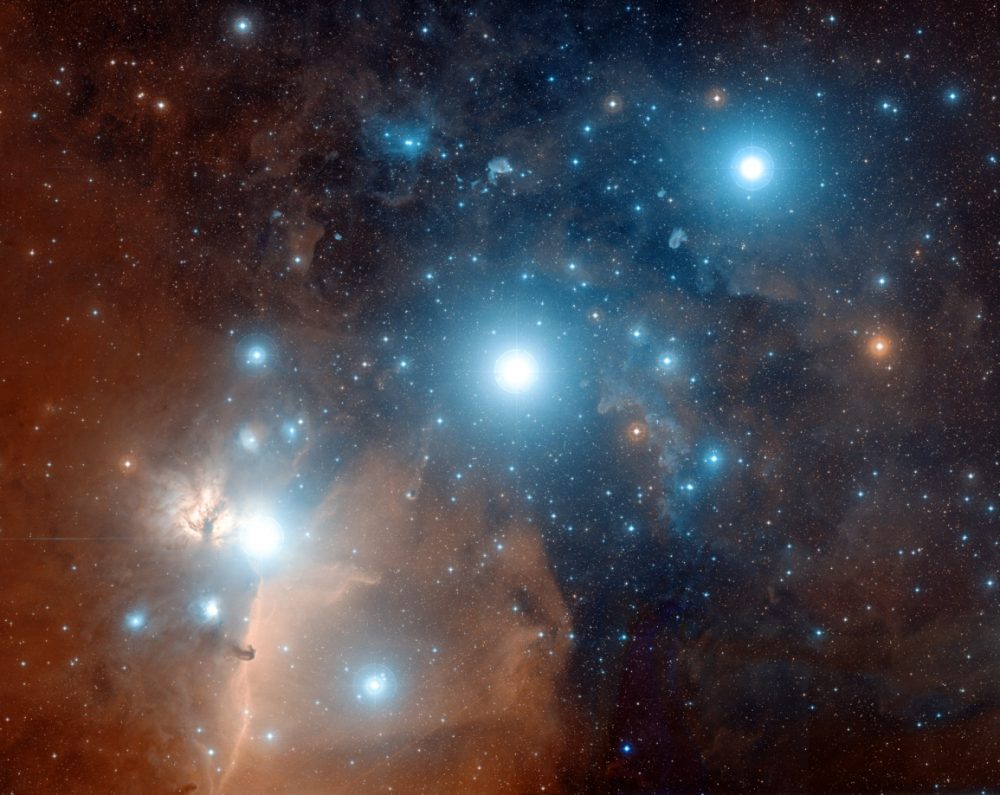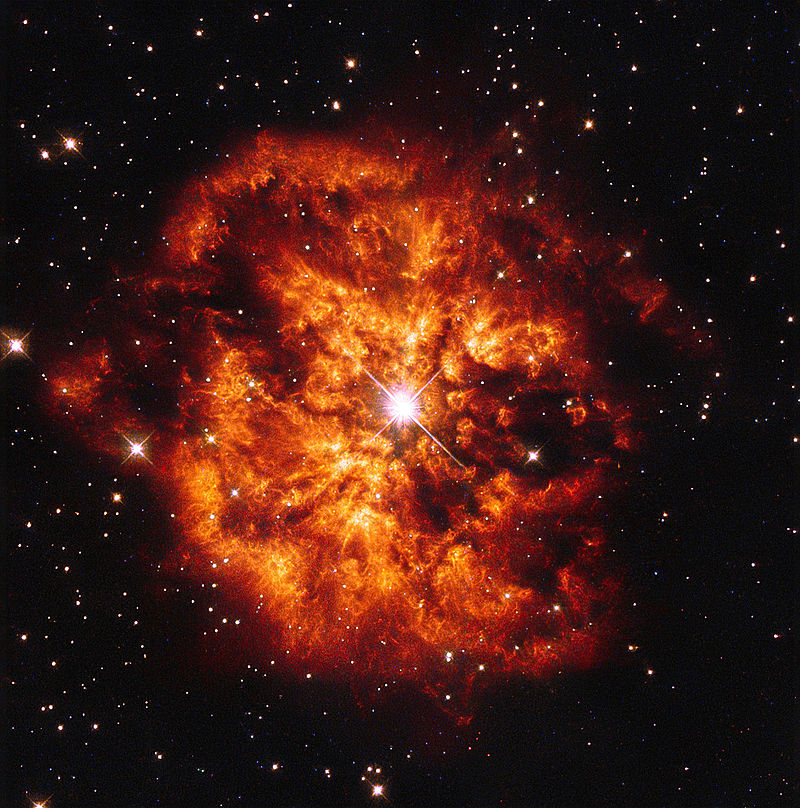
The research of this group, led by Michaela Kraus, can be characterised by its dominant focus on studies of massive hot stars. In particular, the long-term, almost exclusive focus on Be- and shell stars in binary systems has been successfully extended to studies of hot massive stars in their different evolutionary stages, which now represent the main research topics of the group. The research includes studies of luminous, hot, massive B‑ and O‑type stars, as well as massive stars in transition phases, i.e., Wolf-Rayet (WR) stars, Luminous Blue Variables (LBVs), Blue Supergiants (BSGs), B[e] Supergiants (B[e]SGs), Yellow Hypergiants (YHGs), and Red Supergiants (RSGs). The objects studied can be either single or in binary or multiple systems. The group is also involved in observational and theoretical studies of the chemistry and dynamics of the circumstellar material of evolved massive stars.
Theoretical studies in the modelling of stellar atmospheres, with a natural focus on hot massive stars, are also part of the group’s research. These studies include full NLTE (i.e. without the assumption of local thermodynamic equilibrium) model atmospheres as well as NLTE models of stellar winds.
Research topics of the group: stellar atmospheres, stellar winds and their modelling; massive stars in short-lived transition phases.
Members of the group
- Researchers: Michaela Kraus (head), Jiří Kubát, Brankica Kubátová, Olga Maryeva, Michalis Kourniotis, Martin Jelínek, Vojtěch Šimon
- Emeritus Researchers: Pavel Koubský, René Hudec
- Postdocs: Julieta Sánchez Arias, Jakub Fišák, Alex Camilo Gormaz Matamala
- PhD Students: Suryani Guha, Kateřina Pivoňková, Radoslava Bodnarová
Stellar atmospheres, stellar winds, and their modelling

Theoretical studies in this research area are mainly aimed at developing sophisticated codes for stellar atmospheres and wind modelling, and at investigating the physical mechanisms governing various processes in stars and their environments. One of the main goals of the theoretical studies of the research group led by Jiří Kubát is to provide improved mass-loss rates of massive hot stars using their own developed sophisticated stellar atmosphere (ATA code) and wind codes including 3‑D phenomena (such as non-sphericity and wind inhomogeneities, i.e., wind clumping).
Furthermore, research activities are focused on the development of codes capable of calculating emergent spectra in different wavebands, which can be directly compared with observations. Based on such a comparison, reliable values of stellar and wind parameters can be derived, in particular the mass-loss rates of massive stars at different evolutionary stages and metallicities. The correct value of the mass loss rate is one of the main ingredients forstellar evolution modelling.
In addition to developing their own codes, the members of the group are experienced in using similar stellar atmospheres and wind codes (e.g. TLUSTY, SYNSPEC, PoWR, and CMFGEN) as well as the stellar evolution codes (e.g. MESA) for quantitative stellar spectroscopy and the analysis of different types of stars.
Massive stars in short-lived transition phases

One more expertise of the group is the research of massive stars in short-lived transition phases. These phases are divided into several stellar classes: WR stars, LBVs, BSGs, B[e]SGs, YHGs, and RSGs. During all these phases, the stars display signs for highly dynamic atmospheres and envelopes, and expel large amount of material, often in a series of eruptions. The ejected material accumulates in either circumstellar disks, shells, unipolar, bipolar or multi-polar nebulae.
The research of massive stars in transition phases led by Michaela Kraus is focused on developing suitable methods to derive mass-loss values of these types of stars and to investigate the chemical evolution, structure and dynamics of the ejected material. The knowledge of the amount of mass a star loses within each phase of its life is of utmost importance for reliable predictions of the evolution and final fate of massive stars.
Moreover, members of the group investigate physical mechanism(s) that can lead to enhanced mass-loss and trigger eruptions, as well as they analyse the chemical composition, the 3‑D structure and dynamics of ejacta to uncover the mass-loss history of massive stars in transition.
The group combines results from theoretical models with information derived from observations. Optical, infrared and radio data are collected from 2‑ to 12‑m telescopes, utilizing facilities at GEMINI North and South, ESO’s Very Large Telescopes, APEX Telescope, Nordic Optical Telescope, Gran Telescopio de Canarias, Southern African Large Telescope, 2.2‑m MPI Telescope, 2.15‑m CASLEO Telescope, and the Perek 2‑m telescope. These data are supplemented with images from space missions such as the Spitzer Space Telescope, the Wide-field Infrared Survey Explorer, as well as with photometric data and light curves from various ground-based surveys (e.g., AAVSO, ASAS).
High Energy Astrophysics
The research of this group includes studies of energetic galactic and extragalactic cosmic sources with energies ranging from the far UV through the visible, X-rays and into the Y-ray band. The targets of its activities are the multi-spectral analysis of gamma-ray bursts (GRB) and their optical afterglow, active galactic nuclei (AGN), especially blazers, and other types of high-energy celestial sources, including various types of X-ray binaries and cataclysmic variables (CV).
To obtain the necessary high-energy observational data, the group has been involved in high-energy satellite research and also collaborates with a future ground-based facility dedicated to gamma-ray observations from the surface – the Cherenkov Telescope Array (CTA), which is being built at two sites on La Palma and Paranal. CTA now includes three robotic telescopes built and operated by FRAM in collaboration between the Institute of Physics and the High Energy Astrophysics Group.
The group operates two relatively small robotic telescopes on the ground of the Ondřejov Observatory. The BART robotic telescope with a diameter of 25 cm and the D50 robotic telescope with a diameter of 50 cm. The role of these telescopes is to complement high energy with original optical data for both GRBs and CVs. These objectives complement each other well, as GRBs require a small amount of rapid response time, while CVs occupy the long term programme.
The members of the group are also involved in the European Space Agency’s INTEGRAL, Gaia and XEUS projects, as well as with NASA in the Constellation X study, in particular for the detection of cosmic ray bursts (BART, D50, BOOTES experiments). Other data are obtained from astronomical plate archives – periods of up to 100 years, which provide valuable information on the long-term behaviour of resources in the optical field.
The members of the group regularly organise international conferences and workshops, such as the International workshops on Astronomical X–Ray Optics (AXRO) and the INTEGRAL/BART workshops (IBWS), and participate in the organisation of large international conferences, such as SPIE Europe, the Frascati Workshop on Multispectral Behaviour of Cosmic High-energy Sources, and the International Conferences on Frontier Objects in Astrophysics.
- Observation of gamma-ray bursts: D50 GRB triggered observation
- Observation of gamma-ray bursts: FRAM GRB triggered observation
